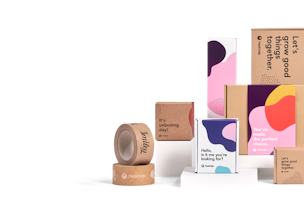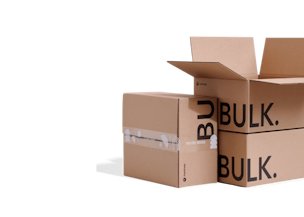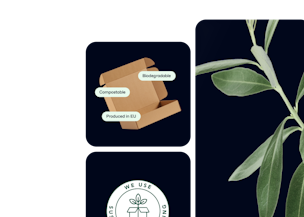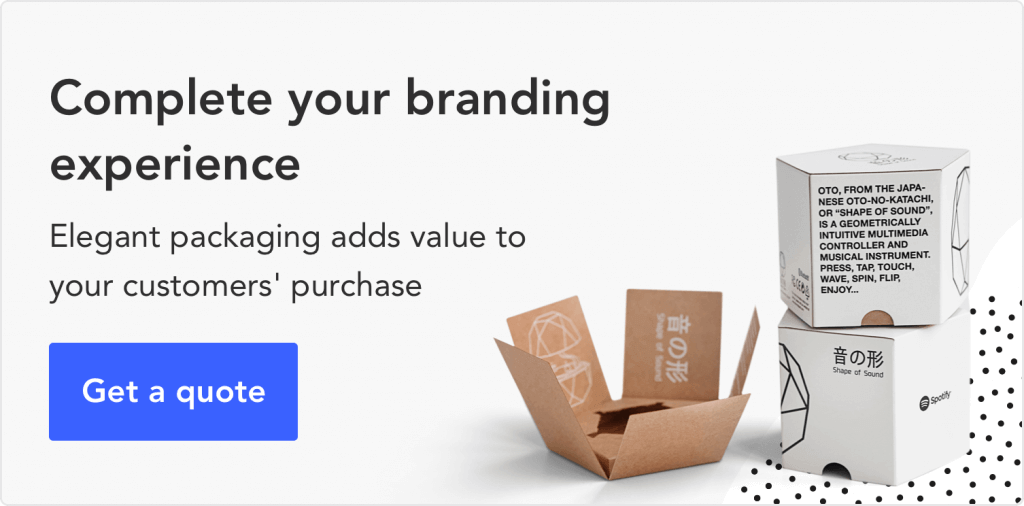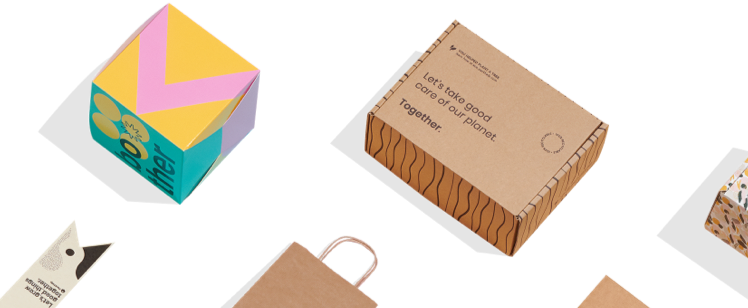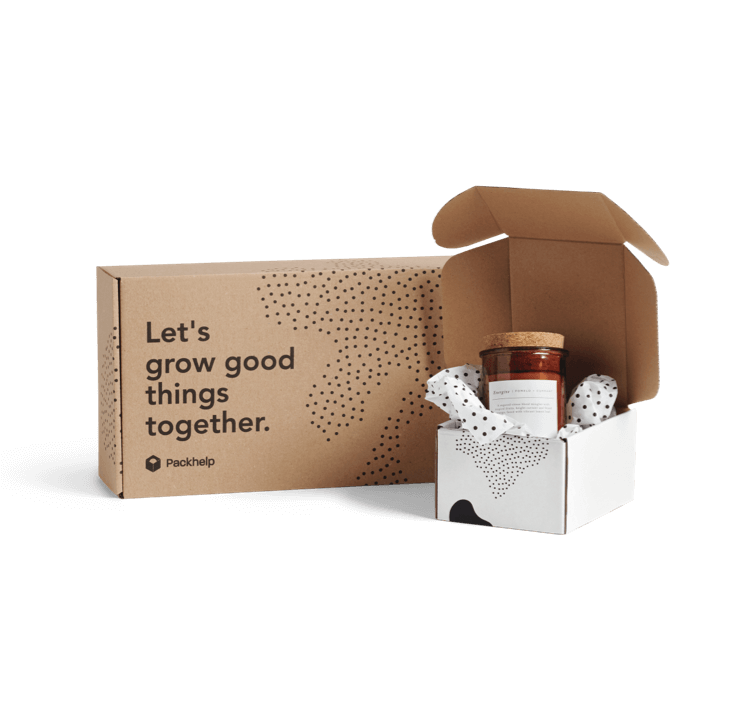Apple’s Distribution Chain The Real Winner Of Less iPhone 12 Packaging

Subscribe to stay updated
You're now subscribed!

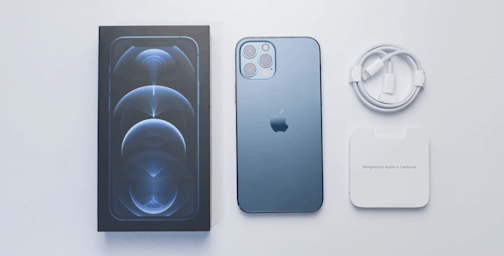
Apple devouts and tech-industry journalists were impressed to discover that there's 50% less Apple packaging for the new iPhone 12.
Like most Apple announcements, there was mention of a faster chip, a more detailed camera, and a tougher screen.
But the most significant change was the announcement that the new iPhone 12 wouldn't come with AirPods or a charger, and less packaging as a result - 50% less, to be exact.
Apple's marketing department says:
- 93% of the packaging is fibre-based, due to our work to use less plastic in packaging
- 100% of the wood fibre comes from recycled and responsible sources
- 72% recycled content in fibre packaging
Apple says it's part of their goal to 'eliminate plastics, increase recycled content, and use less packaging overall'.
While Apple has pledged that all its products will be carbon neutral by 2030, the company does have a turbulent history of greenwashing.
After sitting down and analysing Apple's new packaging with Packhelp's supply chain expert and packaging engineer, Artur Obolenski, we discovered that the latest Apple packaging has wide-reaching benefits for the tech-giant - mainly their supply chain.
"What can't be argued is that Apple is a trendsetter, and many brands will follow in Apple's footsteps," stated Oboleński. "And less packaging can only be good for the environment."
Apple has claimed that the omission of the accessories is a win for the environment, as iPhones now have less packaging.
But like all things' eco', it's not as black and white as it initially seems.
Apple packaging for the iPhone 12: Less is best?
Apple's reasoning for dropping the charger is the idea that there are so many chargers and powered USB ports already, that it doesn't make sense to include the typical 'wall wart' anymore.
People also prefer to use aftermarket headphones, meaning many of the included AirPods don't get used.

This reasoning is sound and is a rare example of Apple acknowledging aftermarket products and competitors.
And it's this reasoning that led to a 50% reduction in Apple packaging on the new iPhone.
'The most basic fundamental rule of packaging design is that packaging follows the product - there's no need for excess packaging.'
'Less packaging is always good. 50% less packaging is great, but the product to packaging ratio still needs to be taken into account', says Oboleński.
Interestingly, French retailers will still have to sell the iPhone 12 with a hands-free device thanks to laws about electromagnetic radiation concerning small children.
Apple provides French stockists with an iPhone in the standard packaging that doesn't have the AirPods but puts that package inside yet another box that contains AirPods.
"A single packaging unit is better than two smaller ones. However, the solution for the French market shows the new Apple packaging in a new light,' explains Oboleński.
It's unclear why Apple decided to manufacture a large box to hold two already packaged Apple products, rather than a single box to hold the unboxed iPhone and AirPods.
Packaging made for the French regulations would have eliminated the need for two packed items to be placed into another box, and been the best ecological solution, too.
"If you have to sell two items, the planet will be better off if you apply the most basic economic design principles - sell them in one optimised box instead of two individual ones."
Similar to packaging for a limited edition product, a single packaging solution for the French market would be the most environmentally and economically friendly solution.
Winner: Apple's long-haul distribution chain
Apple has made a massively eco-friendly move, but not in a traditional manner.
In slashing packaging use in half, Apple has simultaneously lowered it's distribution chain's carbon footprint as well as operational costs.
Many brands consider sustainable or eco-friendly packaging alternatives to be those that implement cutting-edge materials technology, such as Ikea's use of mushroom-based packaging or biodegradable solutions.
But the easiest and most significant way to lower your packaging's carbon footprint is to use as little packaging as possible.
"Switching to a circular economy built on reusing materials, and implementing volume-reduced packaging will deliver the most savings to brand, consumer and environment alike”.
"This new form of Apple packaging is exactly that,' says Oboleński
When looking at the environmental impact of packaging, reducing the overall volume of packaging used is a potent way of lowering carbon emissions during transport.
Smaller packaging means not only less raw material used to create the packaging, but more products fit onto a pallet. Apple states 'the reduction in packaging means 70% more phones can fit on a pallet'.
The reduction in Apple's iPhone packaging means fewer carbon emissions are released during shipping from the Chinese manufacturer to a local distributor.

With both the air and sea shipping industry responsible for staggering amounts of emissions, more products on the same number of pallets mean fewer journeys; a plus for Apple's environmental policy and the environment.
Oboleński explains, "Beyond doubt, using less packaging is always good. While 50% of smaller packaging mightn't equate to 50% fewer carbon emissions, it does mean less packaging being put into circulation."
50% less packaging, plus the omission of AirPods and wall charger means the overall package is almost 40% lighter, too. However, distribution channels are almost always measured in cubic volume, rather than weight.
"As we're not talking about a large, weighty object, a physically smaller unit has more financial and environmental savings than a lighter unit,' says Oboleński.
No cutting last-mile delivery emissions
For Apple's overland last-mile delivery (from the warehouse to a retailer), the packaging reduction has a much smaller effect on carbon emissions.

"In reality, there are several factors that influence last-mile delivery to a retailer. Storage space at the end facility, as well as expected sale volumes affect a retailer's order, and therefore how densely a delivery is packed. This decision can be fully explained by cost-cutting," Oboleński says.
"The narrative of this being done because of the environmental benefits is an overstatement, if not greenwashing."
The good news is that innovation often flows upstream in a supply chain.
Less packaging being used means warehouses now have more space, and that flat packaging is quicker to assemble.
Apple is now primed to lower the amount of packaging used in other flagship products, as well as secondary packaging elsewhere in their distribution chains.
But is making your packaging physically smaller always the best strategy?
"As long as the packaging provides full protection of the product, you want to keep it as small as possible," explains Oboleński. "It's good for your product economy, for the environment and it's simply common sense."
"When taking product design, marketing needs and merchandising opportunities into consideration, one can easily see how the picture gets blurred, and the business decision-making gets complex'
Reducing plastic in packaging
Companies the world over are doubling-down on their efforts to cut out reliance on single-use plastic packaging. And Apple is no different.
"Plastic is a great material that lets businesses offer more, at a low price," explains Oboleński.
"The recyclability of plastic is, however, still a challenge due to leaking circular systems or no systems at all, which ultimately sees plastic packaging in landfill and waterways."
Companies can benefit massively by some simple revisions of existing packaging designs. Removing a plastic window on a retail box does not affect sales, and may remove the use of plastic altogether.

Apple states "We're transitioning to plastics from renewable or recycled sources as alternatives to fossil fuel-based plastics. For the iPhone 12 mini, we use 35 per cent or more recycled plastic in eight components."
Using less plastic is always a good thing, but Obolenski warns that consumers are quick to see through vagueness. Uncertainty breeds scepticism.
Using recycled wood fibre
Apple's packaging of the iPhone 12 also uses more wood fibre (or paper pulp) than the packaging for previous models, including the replacement of the plastic display protector with ones made from fibre.
However, using fibre in the form of cardboard and paper is only as credible as the certifications that back it up.

It states that all wood fibre used in Apple packaging comes from responsibly managed forests and that they have "protected or created enough responsibly-managed forests to cover all the virgin wood fibre we use in our packaging."
However, Obolenski was unable to find any form of logo or indication of there being a certification, which is peculiar given Apple’s documentation on the topic.
"Apple's use of both recycled and responsibly managed wood fibre is certainly a step in the right direction."
"It's strange for a brand to have documentation that their packaging materials were certified, but not show that on the packaging itself," Obolenski commented.
Apple Packaging: Eco-friendly or marketing hype?
It's important to understand that going sustainable is a journey; there's no one silver bullet solution. With Apple packaging hundreds, possibly thousands of SKUs, true sustainability is sure to be an ongoing process.
However, the immediate beneficiary of Apple's new packaging design is its supply chain and distribution channels, with 50% less packaging also doing less harm to the environment.
"Apple's new packaging is a winner for the environment, and it's back pocket, thanks to the supply chain benefits of using less packaging," concludes Oboleński.
"The brand isn’t revolutionising the packaging industry, so while their effort is admirable, they’re not going to win any eco-trophies for using less packaging'.
Ultimately, the most eco-conscious decision a business can make about their packaging is not to use any packaging at all. The second best thing is to use as little packaging as possible.
Artur Obolenski and his team of expert packaging engineers can help your business do just that.
Reach out to Packhelp's team to optimise your packaging supply chain and help the environment out in the process.

